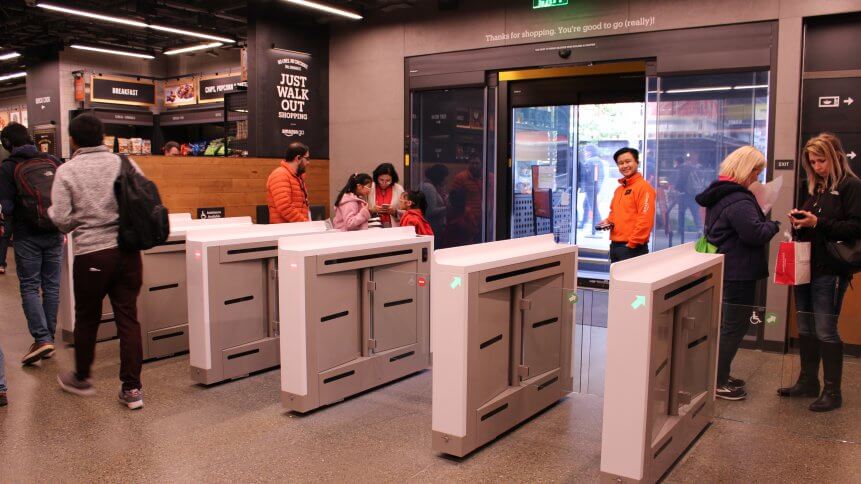Examining the US cashless stores backlash

There has been a huge buzz surrounding the cashless stores space in recent years, with Amazon leading the way and startups like Zippin and Standard Cognition doing interesting work.
For customers, these outlets bust queues. And for retailers, more data can be gathered to track sales and understand buying habits. What’s not to like, eh?
Amazon has opened a number of its Amazon Go stores in America. These tap AI and cameras to check out customers. When people are done shopping, they leave the store. A little later, Amazon sends them a receipt and charges their account.
Last year, however, the e-commerce giant bowed to pressure from those arguing that it was freezing out low-income Americans and agreed to take notes and coins.
New York City Council, meanwhile, recently voted to ban cashless retail and food stores. It is passing a bill requiring bricks and mortar outlets in the city to accept US bills and coins or face fines of up to $1,000 and $1,500 for further violations.
The aim is to stop discrimination against customers who lack access to credit and debit cards, according to councilman Ritchie Torres, who led the bill.
There is no federal legislation that governs this issue, leaving responsibility largely up to states. New York is following in the footsteps of Philadelphia and San Francisco, while Washington and Chicago also have plans to implement bans.
Under review
Another key development here is the Financial Technology Task Force holding a hearing called, Is Cash Still King? Reviewing The Rise Of Mobile Payments.
To quote the hearing memo: “While the challenges of accepting cash are well known to businesses, those for vulnerable populations of the US were to move towards a cashless society have been less researched.”
Access to electronic payments requires a checking or debit account with a financial institution and access to internet-enabled devices, it adds. A shift towards cashless payments could present difficulties for vulnerable segments of the population who lack access to the financial system, an electronic network, or the internet (aka the unbanked and underbanked).
According to the memo, 65 percent of the latter report using cash at least once within a month and a great deal are “lower-income households, less-educated households, younger households, African-American and Latinx households, working-age disabled households, and households with volatile income.”
YOU MIGHT LIKE

Europe is becoming a cashless payments hub
Sticking around
It is constantly being written off by digital evangelists, but cash is incredibly resilient. The rise of digital payments will signal the end of plastic cards, but not notes and coins, according to a new Deutsche Bank report.
“When people discuss the future of payments they tend to predict the end of cash,” it observes. “Our view is different. Not only do we think cash will be around for a long time, we see the transition to digital payments as having the potential to do no less than rebalance global economic power.”
Mobile payments will come to comprise two-fifths of in-store purchases in the US, quadruple the current level, it adds. Whilst in emerging markets, many people are transitioning from cash to mobile payments without ever owning a plastic card.
Deutsche Bank also draws attention to China. “We can deduce much about the future of payments from developments in China where the country is developing world leading digital payments infrastructure,” it says.
“There, the value of online payments is equivalent to three-quarters of GDP, almost double the proportion in 2012. Today, just under half of in-store purchases in China are made via a digital wallet, way above the levels in developed markets.”
But while there is a growing desire to use electronic payment formats, people still use a wide variety of payment options. The solution? Adapt to your customer, don’t expect them to adapt to you.
“The debate is not about any method being king. The issue is the public’s right of payment choice,” says Ron Delnevo, Chairman of the Board at the Cash Learning Partnership. “Cash must remain on the payment choice menu everywhere. It is time for all governments to pass payment choice laws.”
At the same time, though, smart businesses shouldn’t need guidance from lawmakers. They should simply take the customer’s money in any form. Because convenience is king in the brave new world of omnichannel retail, right?








